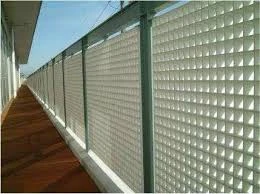
-
 Afrikaans
Afrikaans -
 Albanian
Albanian -
 Amharic
Amharic -
 Arabic
Arabic -
 Armenian
Armenian -
 Azerbaijani
Azerbaijani -
 Basque
Basque -
 Belarusian
Belarusian -
 Bengali
Bengali -
 Bosnian
Bosnian -
 Bulgarian
Bulgarian -
 Catalan
Catalan -
 Cebuano
Cebuano -
 China
China -
 China (Taiwan)
China (Taiwan) -
 Corsican
Corsican -
 Croatian
Croatian -
 Czech
Czech -
 Danish
Danish -
 Dutch
Dutch -
 English
English -
 Esperanto
Esperanto -
 Estonian
Estonian -
 Finnish
Finnish -
 French
French -
 Frisian
Frisian -
 Galician
Galician -
 Georgian
Georgian -
 German
German -
 Greek
Greek -
 Gujarati
Gujarati -
 Haitian Creole
Haitian Creole -
 hausa
hausa -
 hawaiian
hawaiian -
 Hebrew
Hebrew -
 Hindi
Hindi -
 Miao
Miao -
 Hungarian
Hungarian -
 Icelandic
Icelandic -
 igbo
igbo -
 Indonesian
Indonesian -
 irish
irish -
 Italian
Italian -
 Japanese
Japanese -
 Javanese
Javanese -
 Kannada
Kannada -
 kazakh
kazakh -
 Khmer
Khmer -
 Rwandese
Rwandese -
 Korean
Korean -
 Kurdish
Kurdish -
 Kyrgyz
Kyrgyz -
 Lao
Lao -
 Latin
Latin -
 Latvian
Latvian -
 Lithuanian
Lithuanian -
 Luxembourgish
Luxembourgish -
 Macedonian
Macedonian -
 Malgashi
Malgashi -
 Malay
Malay -
 Malayalam
Malayalam -
 Maltese
Maltese -
 Maori
Maori -
 Marathi
Marathi -
 Mongolian
Mongolian -
 Myanmar
Myanmar -
 Nepali
Nepali -
 Norwegian
Norwegian -
 Norwegian
Norwegian -
 Occitan
Occitan -
 Pashto
Pashto -
 Persian
Persian -
 Polish
Polish -
 Portuguese
Portuguese -
 Punjabi
Punjabi -
 Romanian
Romanian -
 Russian
Russian -
 Samoan
Samoan -
 Scottish Gaelic
Scottish Gaelic -
 Serbian
Serbian -
 Sesotho
Sesotho -
 Shona
Shona -
 Sindhi
Sindhi -
 Sinhala
Sinhala -
 Slovak
Slovak -
 Slovenian
Slovenian -
 Somali
Somali -
 Spanish
Spanish -
 Sundanese
Sundanese -
 Swahili
Swahili -
 Swedish
Swedish -
 Tagalog
Tagalog -
 Tajik
Tajik -
 Tamil
Tamil -
 Tatar
Tatar -
 Telugu
Telugu -
 Thai
Thai -
 Turkish
Turkish -
 Turkmen
Turkmen -
 Ukrainian
Ukrainian -
 Urdu
Urdu -
 Uighur
Uighur -
 Uzbek
Uzbek -
 Vietnamese
Vietnamese -
 Welsh
Welsh -
 Bantu
Bantu -
 Yiddish
Yiddish -
 Yoruba
Yoruba -
 Zulu
Zulu
fiberglass food grade equipment a closer look at its features and ...
A Closer Look at Fiberglass Food Grade Equipment Features and Benefits
Fiberglass food grade equipment has emerged as a popular choice in the food processing and storage industry due to its unique blend of durability, safety, and versatility. This special type of fiberglass is designed to meet strict food safety regulations, making it suitable for various applications from manufacturing to distribution.
One of the most significant features of fiberglass food grade equipment is its resistance to corrosion and chemicals. Unlike traditional metals, fiberglass does not rust or degrade when exposed to moisture or harsh cleaning agents. This characteristic is especially important in food processing environments, where hygiene and cleanliness are paramount. The non-porous surface of fiberglass also prevents bacteria and other contaminants from adhering, thus enhancing food safety.
In addition to being corrosion-resistant, fiberglass equipment is remarkably strong yet lightweight. This unique combination allows for easy handling and transportation without compromising structural integrity. Whether it’s tanks, bins, or conveyor belts, fiberglass can withstand the rigors of daily operations while remaining easy for staff to maneuver. Furthermore, its ability to be molded into various shapes and sizes makes it ideal for customized solutions tailored to specific processing needs.
fiberglass food grade equipment a closer look at its features and ...

Thermal stability is another critical feature of fiberglass food grade equipment. It can handle a wide range of temperatures, making it suitable for both hot and cold food applications. This versatility ensures that businesses can maintain optimal storage conditions for various food products, preserving quality and extending shelf life.
Moreover, fiberglass is an environmentally friendly option. Many manufacturers produce fiberglass using recycled materials, thus contributing to a more sustainable approach in the industry. As businesses increasingly focus on reducing their environmental footprint, choosing fiberglass equipment aligns with these objectives.
Cost-effectiveness is also a notable advantage. While the initial investment in fiberglass equipment may be higher than some alternatives, its durability and low maintenance costs result in long-term savings. Businesses can avoid frequent replacements and repairs, allowing for a more efficient allocation of resources.
In conclusion, the features of fiberglass food grade equipment—corrosion resistance, lightweight strength, thermal stability, environmental sustainability, and cost-effectiveness—make it a compelling choice for the food industry. As companies continue to prioritize safety and efficiency, fiberglass equipment stands out as a reliable solution that meets both operational needs and regulatory standards. With its growing popularity, fiberglass is set to play a crucial role in the future of food processing and storage.









